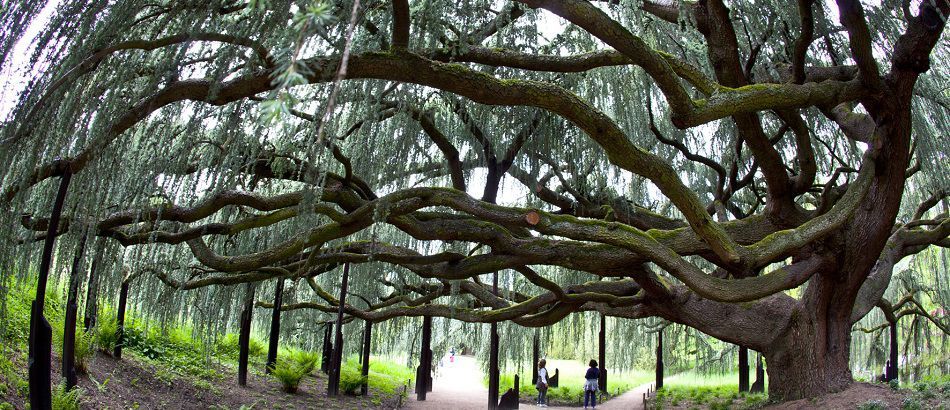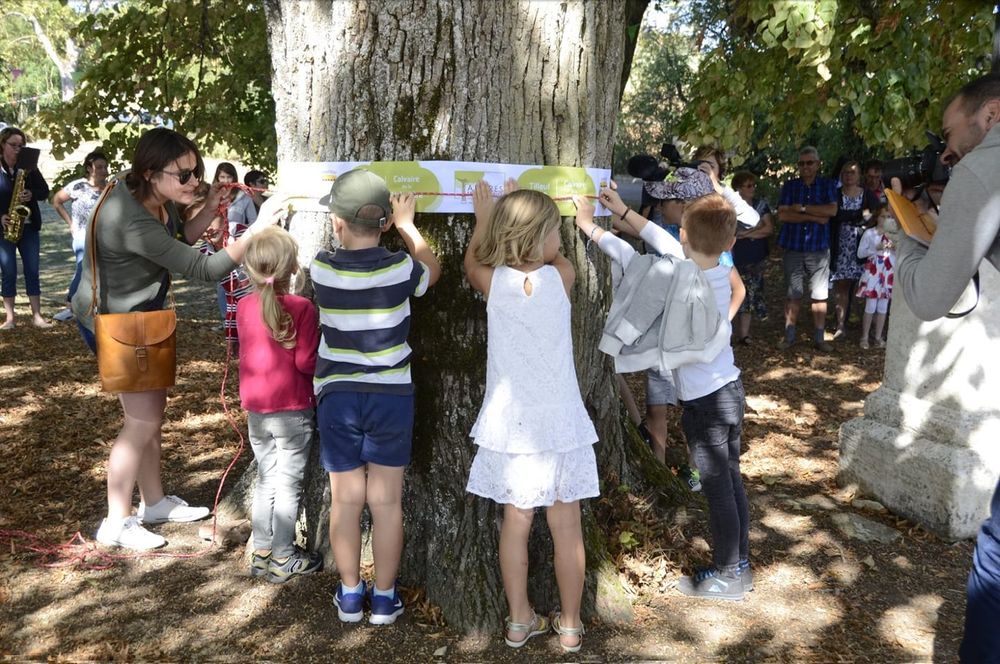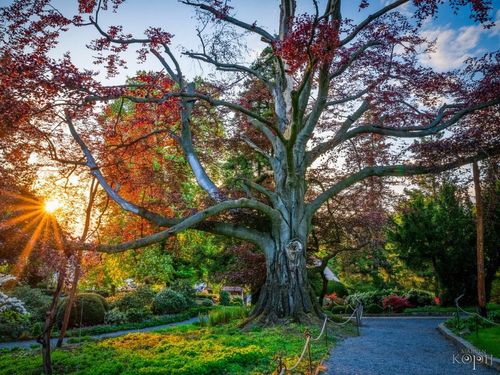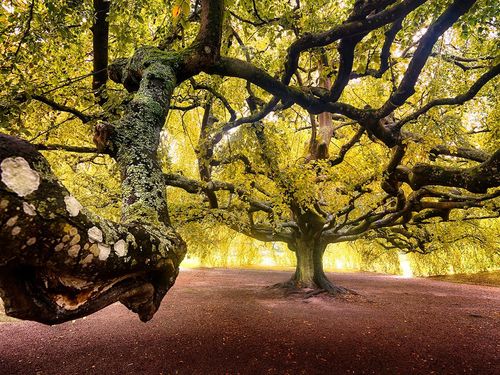Why a Declaration of Tree Rights in France?
6/14/2022 | Josef Jarý

Trees play a fundamental role in the ecological balance of the planet. However, we observe a real contradiction between the need to protect them, especially in cities , and the indifference, even the mistreatment they have no choice to bear, under the ongoing land pressure encouraging cut downs and lefting no space for tree planting. The French n.g.o. A.R.B.R.E.S collects too many complaints about this issues.
The tree is a living being, sensitive to changes in its environment and it cannot be reduced to a simple object. Scientific knowledge about trees has evolved, and we now know that there are interactions between them and with their environment, that for instance they adapt, react to attacks, heal, communicate, collaborate, exchange molecules, gas, water, nutriments. Unfortunately, the French law, through its civil code, presents trees as 'objects' about which their owners can do pretty much what they want. It is obvious today that a change of mindset is needed, that our vision and behavior must evolve. We may see trees as valuable 'earthmates' partners for quality of life on our common planet, not simple objects parts of a decor: The law must recognizes that trees are not objects but living beings, and that they should be considered as such.
The tree is a living being, sensitive to changes in its environment and it cannot be reduced to a simple object. Scientific knowledge about trees has evolved, and we now know that there are interactions between them and with their environment, that for instance they adapt, react to attacks, heal, communicate, collaborate, exchange molecules, gas, water, nutriments. Unfortunately, the French law, through its civil code, presents trees as 'objects' about which their owners can do pretty much what they want. It is obvious today that a change of mindset is needed, that our vision and behavior must evolve. We may see trees as valuable 'earthmates' partners for quality of life on our common planet, not simple objects parts of a decor: The law must recognizes that trees are not objects but living beings, and that they should be considered as such.
More and more personalities, elected officials, law specialist and scientists are putting forward the notions of “common good”, and of rights for the environment, and they even talk about a legal personality for Nature. The possibility of granting rights to the trees is becoming necessary and essential to redefine the offical narrative, if there was any, e.i. what is the status of trees in France. The n.g.o. A.R.B.R.E.S. is well aware of an urgent need to define a new status for trees, and is acting towards their better protection. This is the essence of its Declaration of the Trees Rights ('Déclaration des Droits de l'Arbre' in French, French acronym DDA to put it shortly).
Pets are no longer considered as "movable property" in the French civil law code since February 16th, 2015, but they are qualified as 'living beings'. Would our society agree to recognize also rights for the trees? Through official voices or not, It is anyway a clear message of ideas and hope that is conveyed by the national ngo A.R.B.R.E.S. through this DDA project.
Pets are no longer considered as "movable property" in the French civil law code since February 16th, 2015, but they are qualified as 'living beings'. Would our society agree to recognize also rights for the trees? Through official voices or not, It is anyway a clear message of ideas and hope that is conveyed by the national ngo A.R.B.R.E.S. through this DDA project.
Let's face it, city mayors are sometimes confronted with difficult choices for them to make, that may jeopardize the life of certain trees, especially if they are not protected within the framework of the official local document guiding land development and use, called the local urban land plan (Plan local d'Urbanisme or PLU in French). The adoption of DDA would make possible to envisage a better protection of trees, bringing out a new incentive to think differently about trees. The DDA aims at helping people to act more soundly towards a tree, taking into account its condition as a “living being", and also considering all amenities it provides for life and the environment at various scales of territory.
The DDA was wrote collectively with the precious help of contributors of various backgrounds, such as scientists, lawers, land professionnal, writers, and civilians from ngos. It is a short text of five articles in simple words, easy to share broadly (see the DDA below). We felt we had to humbly express the essentiel, without eluding complexity. This DDA text was presented for the first time and unanimously adopted during a symposium organized by A.R.B.R.E.S. in the premises of the French National Assembly on April 5th of 2019. Since then, it is up to the legislator to embrace it, and inspire French laws uptdates and sounded political strategies. It is up to any communities, organizations and civilians, to adopt it as their own shared vision on trees. This new formalization of what was unsaid, of what is a tree to us, may help in guiding our future decisions and actions involving trees more or less directly.
The DDA was wrote collectively with the precious help of contributors of various backgrounds, such as scientists, lawers, land professionnal, writers, and civilians from ngos. It is a short text of five articles in simple words, easy to share broadly (see the DDA below). We felt we had to humbly express the essentiel, without eluding complexity. This DDA text was presented for the first time and unanimously adopted during a symposium organized by A.R.B.R.E.S. in the premises of the French National Assembly on April 5th of 2019. Since then, it is up to the legislator to embrace it, and inspire French laws uptdates and sounded political strategies. It is up to any communities, organizations and civilians, to adopt it as their own shared vision on trees. This new formalization of what was unsaid, of what is a tree to us, may help in guiding our future decisions and actions involving trees more or less directly.

It is clear that society is changing its vision about trees. Three years after the declaration, more and more city councils are adopting the D.D.A, contributing to collective awareness. Over fourty local authorities of all sizes and everywhere in France have already signed it.
Let us also change the law, we have been actively working on it for years now. As a result, some of our law improvment acurate proposals are now conveyed by elected representative and heard by law makers in the hemicyle of the French National Assembly. But let us first start simply, by claiming what we agree on about trees, in adopting and implementing the DDA in our cities and towns. Make it yours, and respect it !
- Georges Feterman, President, Maxime Fauqueur and Sophie Barré, Vice-Presidents, ngo A.R.B.R.E.S.
www.arbres.org
Listen to the song 'Droit comme un arbre' (Straight like a tree) to support the Declaration of Tree Rights, by French band La Caravane Passe feat. Tryo : https://lnkfi.re/Droitcommeunarbre
Let us also change the law, we have been actively working on it for years now. As a result, some of our law improvment acurate proposals are now conveyed by elected representative and heard by law makers in the hemicyle of the French National Assembly. But let us first start simply, by claiming what we agree on about trees, in adopting and implementing the DDA in our cities and towns. Make it yours, and respect it !
- Georges Feterman, President, Maxime Fauqueur and Sophie Barré, Vice-Presidents, ngo A.R.B.R.E.S.
www.arbres.org
Listen to the song 'Droit comme un arbre' (Straight like a tree) to support the Declaration of Tree Rights, by French band La Caravane Passe feat. Tryo : https://lnkfi.re/Droitcommeunarbre

DECLARATION OF TREE RIGHTS
proclaimed on April 5th 2019 at A.R.B.R.E.S. Congress in the French National Assembly
Article 1
The tree is a fixed living being which, in comparable proportions, occupies two distinct environments, the atmosphere and the soil. Roots develop in the soil and capture water and minerals. In the atmosphere grows the crown, which captures carbon dioxide and solar energy. Because of this situation, the tree plays a fundamental role in the ecological balance of the planet.
Article 2
The tree, living being sensitive to changes in its environment, must be respected as such, can not be reduced to a single object. He is entitled to the airspace and underground space he needs to achieve his full growth and reach his adult size. In these conditions the tree is entitled to respect for its physical integrity, aerial (branches, trunk, foliage) and underground (root network). The alteration of these organs seriously weakens it, as does the use of pesticides and other toxic substances.
Article 3
The tree is a living organism whose average longevity far exceeds that of the human being. He must be respected throughout his life, with the right to develop and reproduce freely, from birth to natural death,
whether he is a tree of the cities or the countryside. The tree must be considered as a subject of law, including the rules governing human property.
Article 4
Some trees, considered remarkable by men for their age, appearance or history, deserve additional
attention. By becoming a common bio‐cultural heritage, they gain access to a higher status that commits
humans to protect them as "natural monuments". They can be registered in a landscape heritage
preservation zone, thus benefiting from enhanced protection and enhancement for aesthetic, historical or
cultural reasons.
Article 5
To meet the needs of men, some trees are planted and exploited, necessarily escaping the criteria
mentioned above. The way in which forest or rural trees are harvested, however, must take into account
the life cycle of trees, natural renewal capacities, ecological balances and biodiversity.
The aim of this text is to change the way people look and behave, to make them aware of the crucial role of trees in everyday life and for the future, by paving the way for a rapid change in legislation at national level in France.
Share


